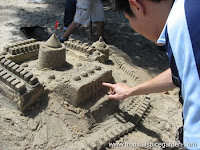The following story about Rav Nosson Tzvi Finkel zt”l is from the hesped given at by Rabbi Aryeh Cohen at the Hebrew Academy of Long Beach. Any mistakes in the transcription are my own. The entire emotional and personal hesped is available at YUTorah.org.
I’ll never forget. One day I walked in to speak to him in his house. He was sitting at his table, where he often was, and he has a pile this high, probably five hundred pieces of paper. And they were letters to thank those who came to the Mir Yeshiva dinner for coming and helping out, whatever tzedaka. And he was sitting there signing every single one personally. Every single one, “Nosson Tzvi Finkel”. Every one personally. And when I tell you that each one took anywhere between thirty seconds and a minute, it’s no exaggeration. It was very hard for him with his Parkinson’s and his arms flying to just, it was the way he would write, so until he got his pen down, once he got his pen down he could start, so he would be able to slide and finish that particular line. But, each line took a long time for him to start, sometimes ten, twenty, thirty seconds. Never heard of computer images, of a stamp? Your sending out a mass letter of five hundred letters, maybe more, that was one pile. There might have been more piles. But, the Rosh Yeshiva understood that the chizuk, the inspiration, that each individual gets to have a little bit of a signature of the Rosh Yeshiva, to feel that kesher to the Rosh Yeshiva. I’ll tell you, if you talk to anyone who learned in the Mir, they will tell you what they loved most was that kesher to the Rosh Yeshiva.
Also, Dixie Yid transcribed Rav Weinberger’s Shabbos drasha this past week that also contained several beautiful stories about Rav Nosson Tzvi and also describes a brief meeting Rav Weinberger had with him…well worth reading.









